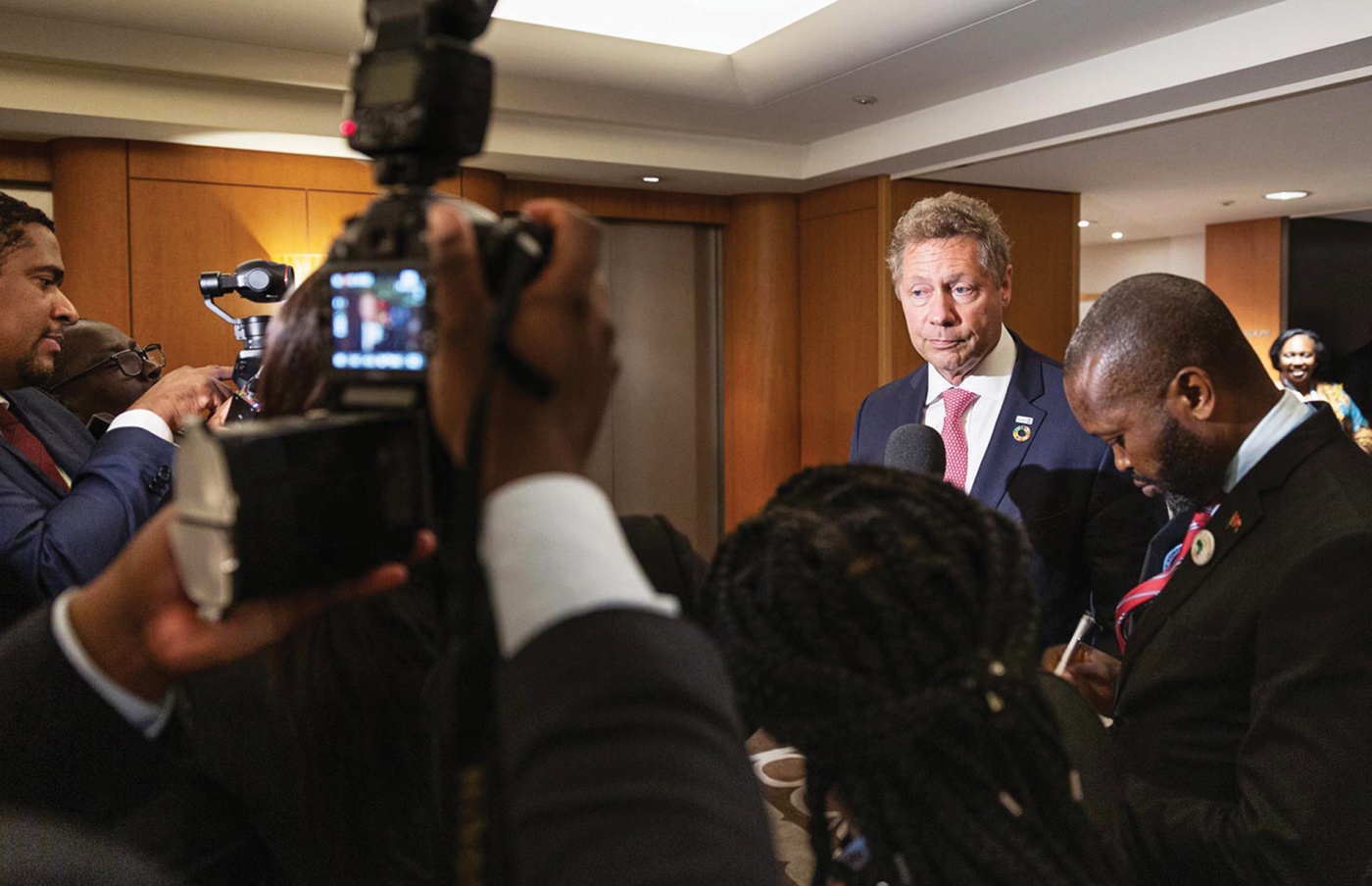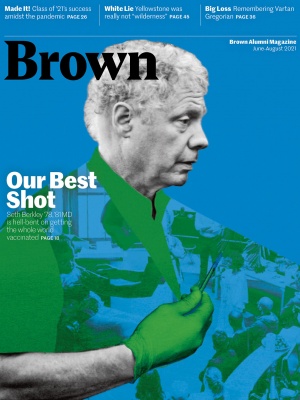Stick It.
How do you get the world to work together, and fast, to get all of humanity vaccinated against COVID? Call on the charismatic “Indiana Jones of Public Health,” Seth Berkley ’78, ’81 MD
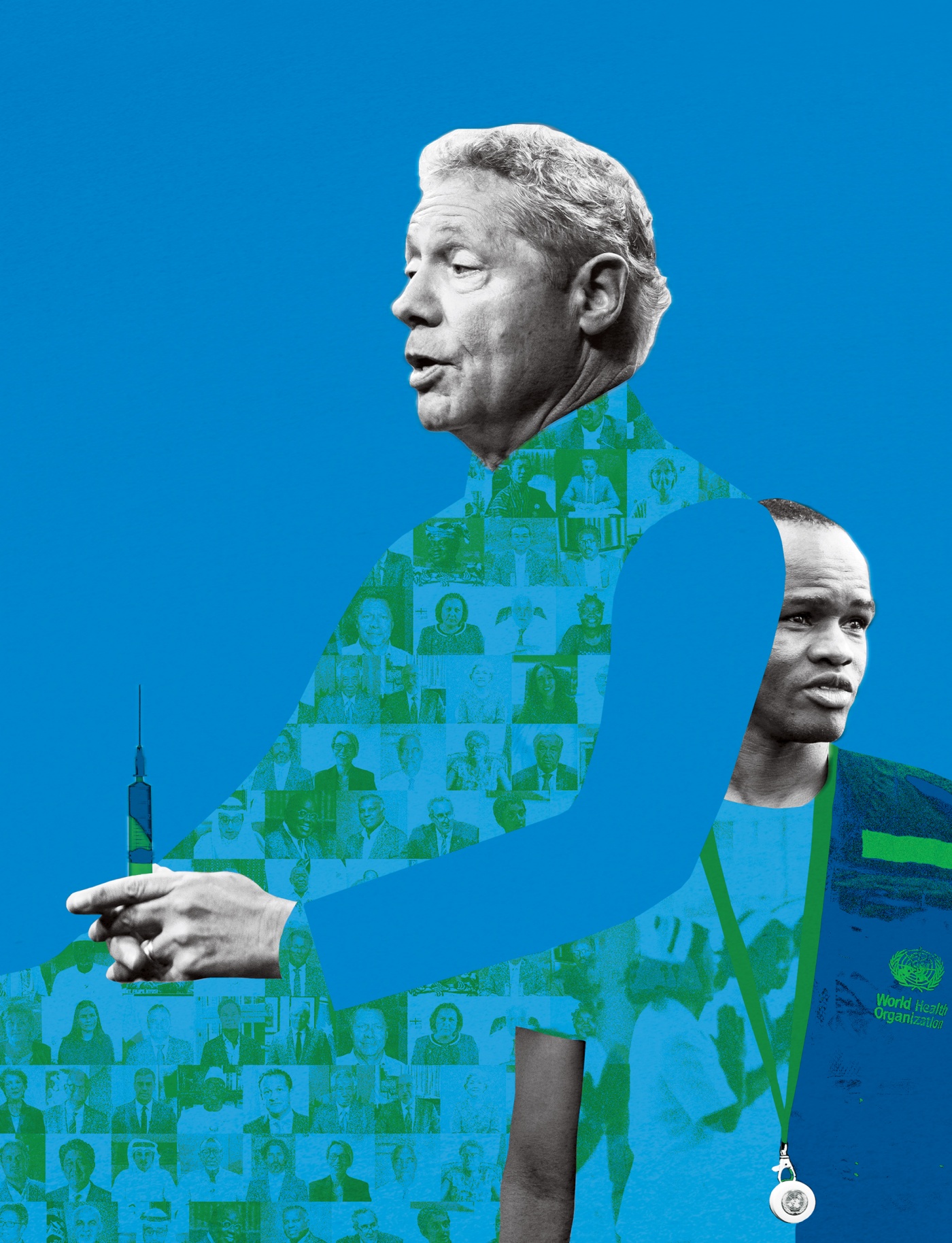
While briefing Australian parliamentarians on the latest COVID-19 vaccination rollout updates, Dr. Seth Berkley ’78, ’81 MD felt that something was off. Then he realized—unlike during his normal work trips to the Land Down Under, for the first time in decades he was not “zonkers jet-lagged” at his meetings because, of course, he was on video chat. For a man used to flying all over the world, all the time—a man so used to living life on the go that he had proposed to his wife on a plane—the mission of coordinating the largest vaccine distribution campaign in history from his home in Switzerland was indeed a strange state of affairs.
A renowned epidemiologist and the CEO of Gavi, the international vaccine alliance, Berkley is one of the leaders of COVAX, an initiative designed to ensure that countries unable to afford to buy or produce COVID-19 vaccines on their own are still able to receive them in a timely, equitable manner. Effective vaccines are now on the market, but there are only so many to go around—and in the rush to return to normalcy, many wealthier countries are immunizing most or all of their citizens before poorer countries can even get started.
This is “the biggest moral test before the global community,” as the UN Secretary General declared in February. And if that’s not enough—and it often isn’t for world leaders—studies have shown that leaving large swaths of the globe behind in the vaccination race will also have massive economic consequences for developed countries. Most importantly, it increases the risk of a vaccine-resistant variant spreading.
Yet convincing virtually every country in the world to agree to work together and to invest in vaccine development, manufacturing, and distribution instead of just moving forward alone in self-interest is not an easy task in the age of vaccine nationalism. Raising the money necessary to speed up the production, testing, and procurement of numerous possible vaccines, and then navigating the logistics of actually getting those vaccines to people everywhere in varying conditions from war zones to hinterlands, has been its own behemoth challenge.
For Berkley, a world-famous AIDS researcher and the rare epidemiologist not named Fauci to be featured in Time magazine’s 100 Most Influential People edition, the politics, public health, and philosophy underlying COVAX are the product of his decades-long intensive fight to change how the world deals with infectious disease. And it all began with a first-year girlfriend at Brown who convinced him to take Intro to Portuguese.
What’s important?
Berkley arrived on campus as a PLME student with a voracious intellectual appetite, taking courses in everything from engineering to religion and classics. Still, he didn’t understand why his girlfriend was studying Portuguese.
“I said, ‘Why are you taking Portuguese? That’s not an important language,’” Berkley recalls. “And she said ‘You know, it’s one of the most widely spoken languages on Earth.’ And I started to listen and pay attention.”
“For me it was about where did I think I could make the most difference? How could I influence and make people as healthy as possible?”
Signing up for Portuguese classes (and eventually mastering the language) led him to connect with the late Anani Dzidzienyo, a Ghanaian professor (see story page 16) who exposed Berkley to African literature. A trip to Senegal as a medical student got him interested in tropical diseases and a suggestion by the dean of the medical school to read a book called Plagues and People prompted Berkley to become aware of the connections between governance and pandemics—how policies shape public health interventions and behaviors, with results that can save or cost lives. This thinking would animate much of Berkley’s later work. Despite a post-grad stint at Harvard that he could have parlayed into an academic career, Berkley chose to keep following his interest in infectious disease—even though in the early ’80s, the field was considered rather humdrum because of a widespread belief that modern science had mastered the microbe.
“There was almost an arrogance at the time that said, ‘We have antibiotics and sophisticated medicine, this is old stuff,’” Berkley says. “But for me it was about where did I think I could make the most difference? How could I influence and make people as healthy as possible? As a public health person, it’s about changing the population dynamics, not just the individual dynamics.”
So while clinical medicine, and getting to bond and directly improve the lives of individual patients, had been Berkley’s first love, he switched focus to epidemiology and its promise of large-scale change.
CDC sleuth
Taking a job at the Centers for Disease Control and Prevention, Berkley found himself sent to Brazil because of his fluency in Portuguese, hunting down the source of a mysterious outbreak causing the death of small children after bouts of fever and vomiting. The resulting CDC investigation announced to the world the discovery of Brazilian purpuric fever.
The CDC then asked Berkley to move to Uganda in 1987 to help rebuild its health systems and immunization capacity following years of turmoil. He found himself dropped into a country still simmering with pockets of civil war in the aftermath of a coup.
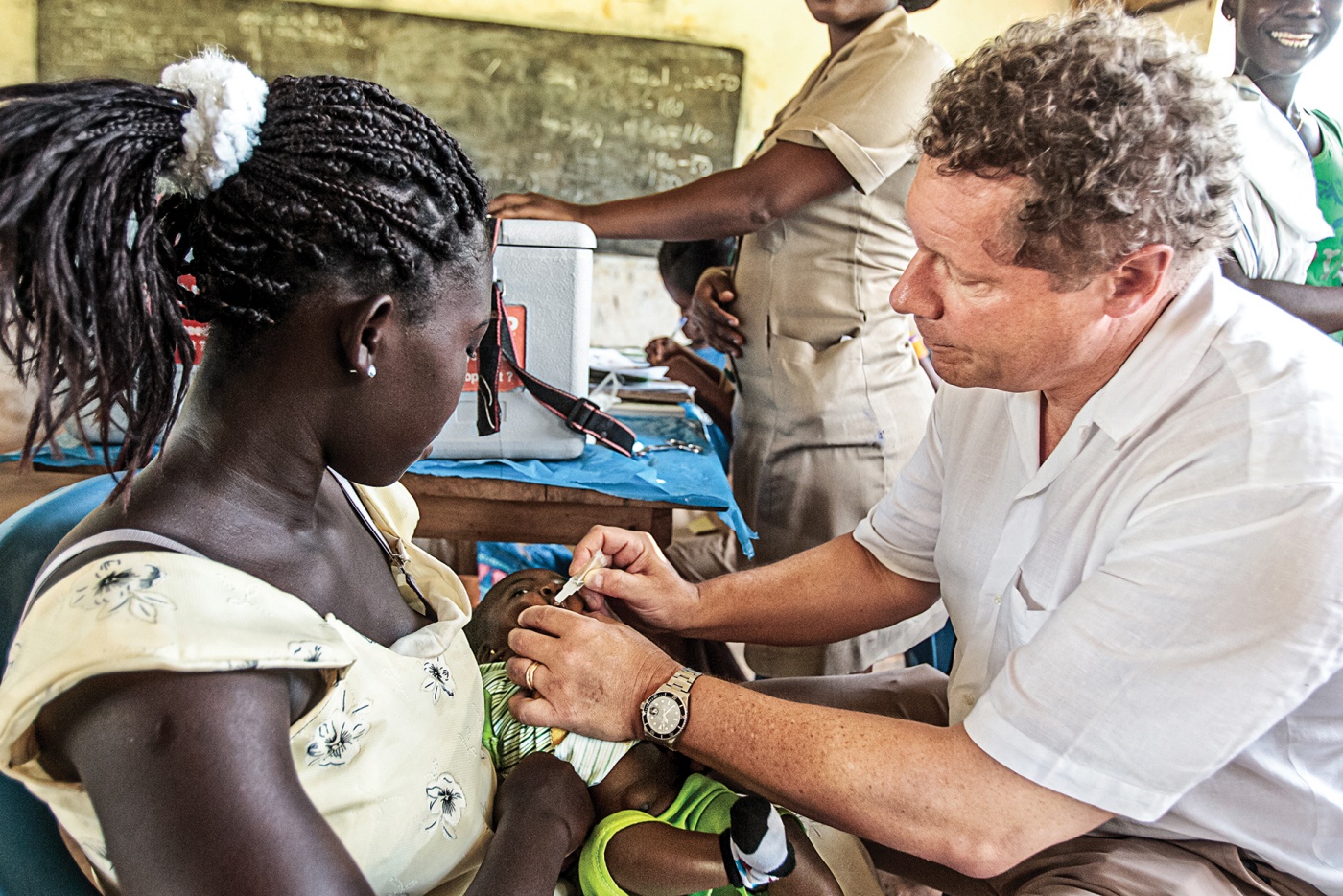
Fortunately, Berkley has never been the type to crave safety and stability—so much so that he developed a reputation as something of an Indiana Jones in the world of public health. He has learned to pilot planes, ride horses, and sail boats, and his travels include an expedition into a remote stretch of Namibia during which he broke both ankles, requiring a helicopter evacuation and emergency surgery that he himself supervised to make sure it was done right. He also traveled by camel through the sub-Saharan desert amidst conflict and famine for an on-the-ground CDC investigation, a work trip he conducted with former colleague Michael Linnan.
“Riding camels, your ass gets pretty damn sore, but he took that in stride,” recalls Linnan, a Marine Corps vet. “He reacts really well to stress. He considers all the options, doesn’t panic. He’s a can-do guy.”
HIV ed
Berkley’s arrival in Uganda coincided with wider recognition of the emerging AIDS crisis in Africa. Most African leaders were downplaying concerns, but Berkley helped conduct a national survey that showed an alarming rise in AIDS numbers across Uganda—so many people were infected that Berkley first thought the decimal place had been put in the wrong spot. More than one in 10 Ugandans—and nearly 20 percent of the residents of Kampala, the capital—were HIV positive, including almost all sex workers.
Berkley alerted Ugandan President Yoweri Museveni, who chose to publicize the growing epidemic directly in the national press and set about building one of Africa’s most successful responses, even as neighboring leaders ignored it. Foreign aid began to pour in, bolstering Uganda’s ability to create a robust public health campaign.
Berkley moved on to a high profile position at the Rockefeller Foundation but stayed deeply involved in AIDS research, coming to believe the only way to defeat the scourge would be to develop a vaccine. Yet the effort was lagging. Why? Many public health interventions at the time were led by slow-moving bureaucracies like the UN, Berkley says, which faced distrust in the developing world. With AIDS awareness spreading globally, the incentive for the more nimble private sector to invest the hundreds of millions it would take to produce a vaccine actually decreased—companies realized they would face pressure to subsidize or give away their product in the poorer countries where it was most needed, while palliative care and ongoing treatments for HIV were proving profitable. Trials to test vaccines advanced hesitantly, with R&D efforts, public awareness campaigns, and the creation of manufacturing capacity across the world often hopelessly siloed.
To confront the systemic problems, Berkley founded the International AIDS Vaccine Initiative (IAVI) in 1996, laying the groundwork for concepts and strategies that would later inform COVAX.
Red tape cuts
IAVI became the first biomedical product development public-private partnership, with the advantage of being bound to neither government nor shareholders. The goal was for IAVI to become a roving “venture capitalist” that could identify, invest in, and accelerate the most promising vaccine candidates, especially those deemed too risky or costly for the private sector to carry out alone. The companies benefiting from this support agreed to provide any future vaccine at an affordable rate.
As Berkley explained the organization back in the early 2000s: “We bring together a not-for-profit capacity-building culture with an industrial product-development culture.”
A national survey showed an alarming rise in AIDS numbers across Uganda—so many people were infected that Berkley first thought the decimal place had been put in the wrong spot.
In the tradeoff of time and money, Berkley wanted IAVI to always reduce time, whatever the cost. Like COVAX, IAVI curated a broad portfolio of vaccines, incubating and assisting the work of various partners. That meant funding multiple trials at once, being able to switch directions when more promising vaccine candidates and technologies emerged, and investing in production, testing, and personnel in countries like Kenya and India where AIDS was rampant. The local networks played critical roles in explaining the importance of the years-long human trials—which included sensitive personal questions and tests that risked being viewed as invasive—to the communities asked to undergo them.
The organization encountered criticism for being too single-minded in its pursuit of a vaccine, and especially in navigating the ethics of carrying out human trials in the developing world, where participants bore greater risk. Yet Berkley has always insisted that IAVI’s approach was the best way to save the most lives as quickly as possible. For one thing, he argues, it was actually tailored to the populations most in need of a vaccine. Prior drug development had focused on the strands of HIV found in the U.S. and Europe. Before IAVI, not a single study used the variants of HIV endemic to African countries, or carried out trials on the ground there. IAVI, on the other hand, aimed to build popular support within the most affected countries and develop demand—and political pressure—for a vaccine when one finally arrived.
None of this was cheap. But it helped that the charismatic and well-connected Berkley knew how to appeal to both governments and deep-pocketed donors with his impassioned and bespoke public health pitches. A few years after IAVI’s inception, he convinced Bill Gates and his family’s nascent foundation to hand over $25 million—then the largest donation to fund AIDS research—helping kick-start the billionaire’s role as a cornerstone of global immunization campaigns. (The relationship would come in handy in 2020, when the Gates Foundation poured funds into COVAX.)
Despite decades of work, the world still lacks an HIV vaccine, but it has been widely acknowledged that without IAVI these efforts would be far behind where they are now. In 2011, Berkley moved on to helm Gavi, overseeing the immunization of hundreds of millions of children against preventable diseases in countries with the least access to health care and gaining more experience that would prove indispensable come 2020.
Profit-motive fail
In the midst of the Ebola outbreak in 2015, Bill Gates gave a now oft-cited TED Talk warning about the certainty of a terrible pandemic on the horizon. Right after, Berkley appeared on stage with a presentation of his own explaining how to prevent that from happening.
“Every year, we spend billions of dollars keeping a fleet of nuclear submarines permanently patrolling the oceans to protect us from a threat [nuclear war] that almost certainly will never happen,” Berkley said. “And yet we spend virtually nothing to prevent something as tangible and evolutionarily certain as epidemic infectious diseases. And make no mistake about it—it’s not a question of ‘if,’ but ‘when.’”
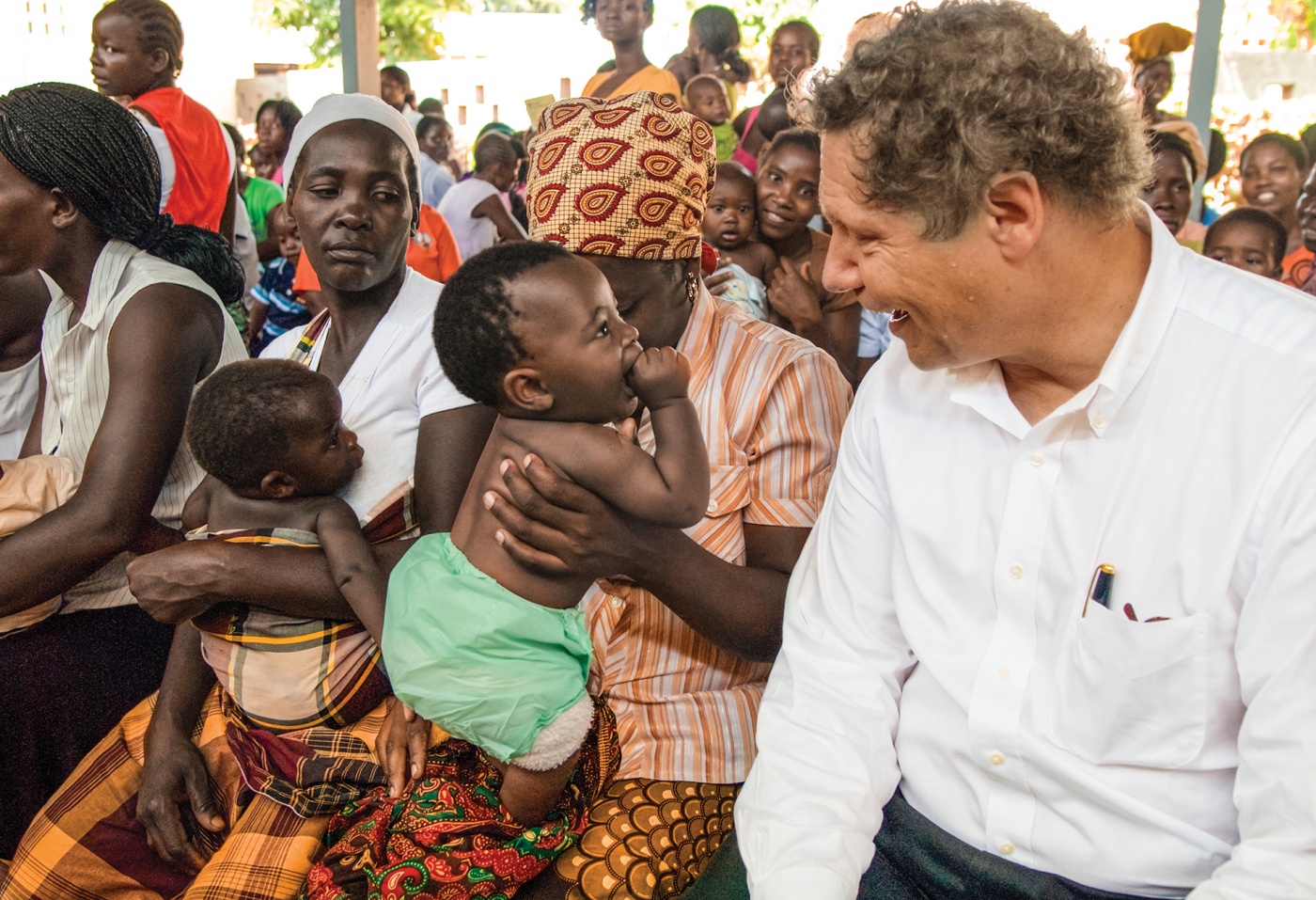
He argued that we need built-in deterrence in our public health systems, especially in vaccine development and distribution infrastructure, returning to his idea of a “complete market failure” to develop vaccines for diseases that primarily affect impoverished countries. Companies put money into vaccines only once wealthy countries are affected—as when, soon after Ebola reached U.S. shores, vaccines were deployed. Yet Ebola has been wreaking havoc since the 1970s, and the vaccine that proved effective had been identified more than a decade before it was approved for widespread use. In other words, a lot of deaths could have been prevented. As Berkley saw it, there had to be bigger subsidies and better incentives—global interventions—to promote vaccine development and equip at-risk countries to handle public health crises.
By mid-2020, Berkley had steered Gavi to work with a producer to purchase and stockpile a supply of Ebola vaccines that countries affected by the disease could draw from in times of need. The intervention holds the promise of preventing an outbreak from ever again getting out of hand. But by then, Ebola was far from the public eye. There was a new pathogen in town.
Going it alone
In the spring of 2020, efforts to develop an effective COVID-19 vaccine were in full swing. Yet to the dismay of public health experts like Berkley, governments and companies alike were showing very little desire to embrace a global approach. It seemed as if the outcome of the 2009 Swine Flu epidemic—in which rich countries hoarded vaccines rather than sending them to areas of the world with the highest rates of transmission—would be repeated.
And to a large degree that is exactly what has happened. By mid-March, a few wealthy countries (Australia, Canada, Japan, the U.K., the U.S., and the E.U.) had secured more than three billion doses of vaccines, enough to vaccinate their entire populations with two doses and have at least one billion doses left over, according to anti-poverty group One Campaign. The U.S. sat on tens of millions of AstraZeneca vaccine doses that it couldn’t use until, in late April, India’s death toll took on frightening proportions. Canada ordered five times the vaccine doses it needs. Healthy young people in a handful of wealthy countries will be vaccinated before most front-line health workers in dozens of countries where the pandemic still rages. One recent study predicts that twice as many deaths will be prevented if the vaccine is distributed proportionally by population across countries instead of going straight to wealthy ones.
Berkley believes vaccine nationalism is not simply unethical but bad public health policy:
“Even if you have 100 percent of your population covered, but the virus is circulating in other populations, that allows it to mutate.” There are thousands of variants of the virus. Allowing them to evolve and spread could undermine the effectiveness of the vaccines we have now.
Berkley and his colleagues quickly understood they’d need to think big. To fully enact the COVAX initiative and its accelerated vaccine development program would cost tens of billions, though such an investment could lead to massive returns. One study predicts the global economy will suffer a $9.2 trillion loss if developing countries do not gain timely access to COVID vaccines, with around half of this impact hitting wealthy countries. Each month the pandemic persists, it costs the world about $375 billion. Then there are the peripheral effects of job loss, poverty, domestic violence, and children losing out on education, particularly in poorer countries.
Even as wealthy countries contemplate the end of pandemic restrictions, Berkley knows this will not be the last plague in our lifetimes.
Thankfully, in the years following Gates’s and Berkley’s TED Talks, the world had become at least marginally more ready for a pandemic, notably with the formation of the Coalition for Epidemic Preparedness Innovations (CEPI), which last summer pumped money into R&D for the most promising of the dozens of possible COVID vaccines, accelerating a process that normally takes years of trials, tweaks, and failures. The resulting development of effective vaccines has turned out to be a history-making endeavor, but it’s only the first step in securing global immunity.
“The thing about the public-health approach that’s so important is that it’s not just about implementation,” Berkley says. “It’s also about getting the general population on your side, getting politicians to focus, getting the money—which is absolutely critical. And so the linkage between geopolitics and health becomes really important.”
The innovative model that Gavi and its partners—the World Health Organization and CEPI—applied to COVAX was to have countries agree to pool resources to develop and distribute a wide array of vaccines rather than entering into riskier commitments with specific drug manufacturers before the efficacy of their product could be tested or scrambling to secure deals after results were in. It was pitched as a way to manage risk, given that COVAX has the world’s most diverse portfolio of vaccines on hand—and it ultimately received funding from nearly every country in the world. The model promises that whatever its wealth, each country will start by getting enough doses to vaccinate up to 20 percent of its population.
COVAX still has a long way to go—by April it had sent just 38 million of the 2 billion doses it aims to distribute in 2021, although a deal with Moderna for 500 million doses may help accelerate the roll-out. The program will require around $35 to $45 billion to continue vaccinating adults next year, according to an early May WHO statement. In the meantime, countries have continued to move around COVAX and negotiate directly with drug manufacturers—a move that public health experts say undermines the initiative.
Still, COVAX has shown that when it gets vaccines, it can get them to people—reaching 100 countries so far—and Berkley believes the initiative will continue to gain momentum. Its immunization campaign is on the ground in developing countries like Cambodia, where hundreds of elderly people lined up in March outside a Phnom Penh hospital to get access to the AstraZeneca vaccine via a COVAX partnership with the Serum Institute in India. But mere weeks later, India restricted its vaccine exports amidst a catastrophic domestic outbreak, a sign of the headwinds COVAX will most likely encounter as the virus spreads and changes.
The next pandemic
Even as wealthy countries contemplate the end of pandemic restrictions, Berkley knows this will not be the last plague in our lifetimes. Nor will the need for COVAX-like infrastructure miraculously cease.
Global immunity to COVID could take years, and the only way to get there is treating the global pandemic like a global problem, Berkley argues. He hopes COVAX will provide the framework and institutional foundations for preventing future epidemics from reaching a similar scope of destruction. Just look at Ebola, Berkley says, which was leading the news cycle in the West for months until suddenly it wasn’t. Infections and outbreaks, however, have continued in far away countries that most Americans don’t care much about. The need for vaccinations remains urgent, even as funding them becomes more difficult.
“At the time, when we were (developing the Ebola vaccine), people were like, ‘money’s no object, whatever it takes,’” Berkley says. “Then, six months later: ‘That’s yesterday’s problem.’ Infectious disease is seen as an acute issue, and then it goes away. And that is the fundamental problem.”
Jack Brook ’19 is a 2020-2021 Luce Scholar and received the 2019 Betsy Amanda Lehman ’77 Award for Excellence in Journalism.

